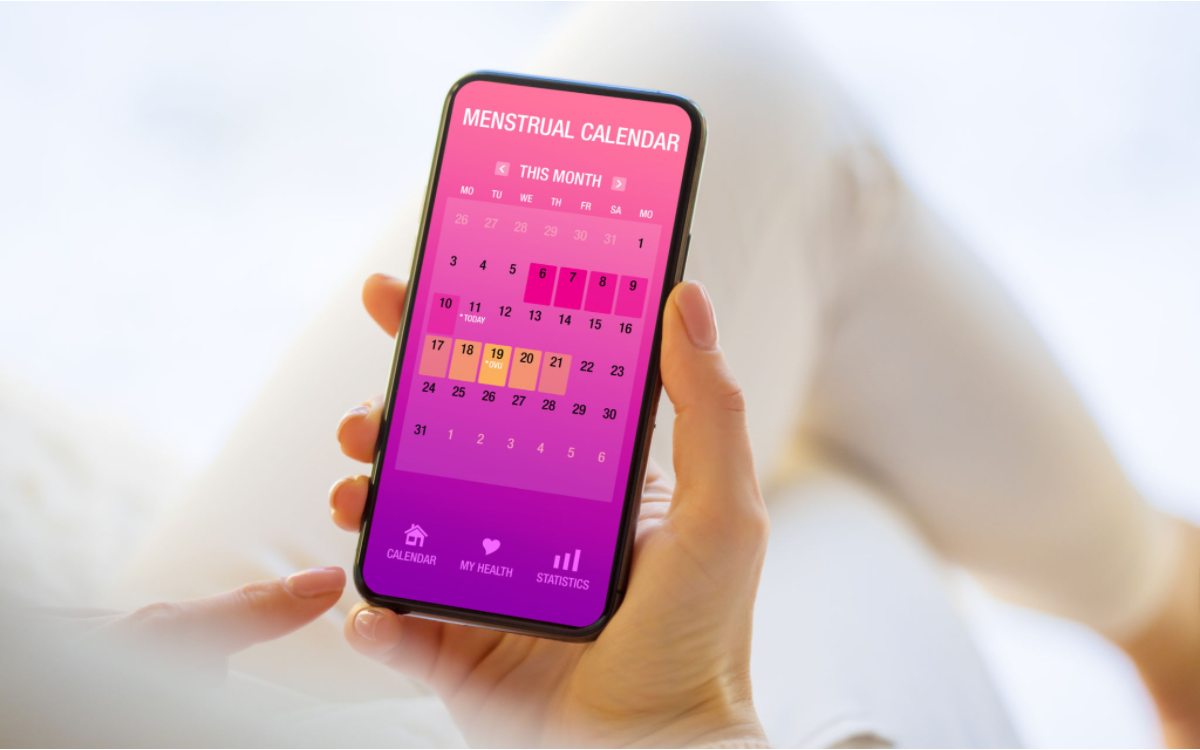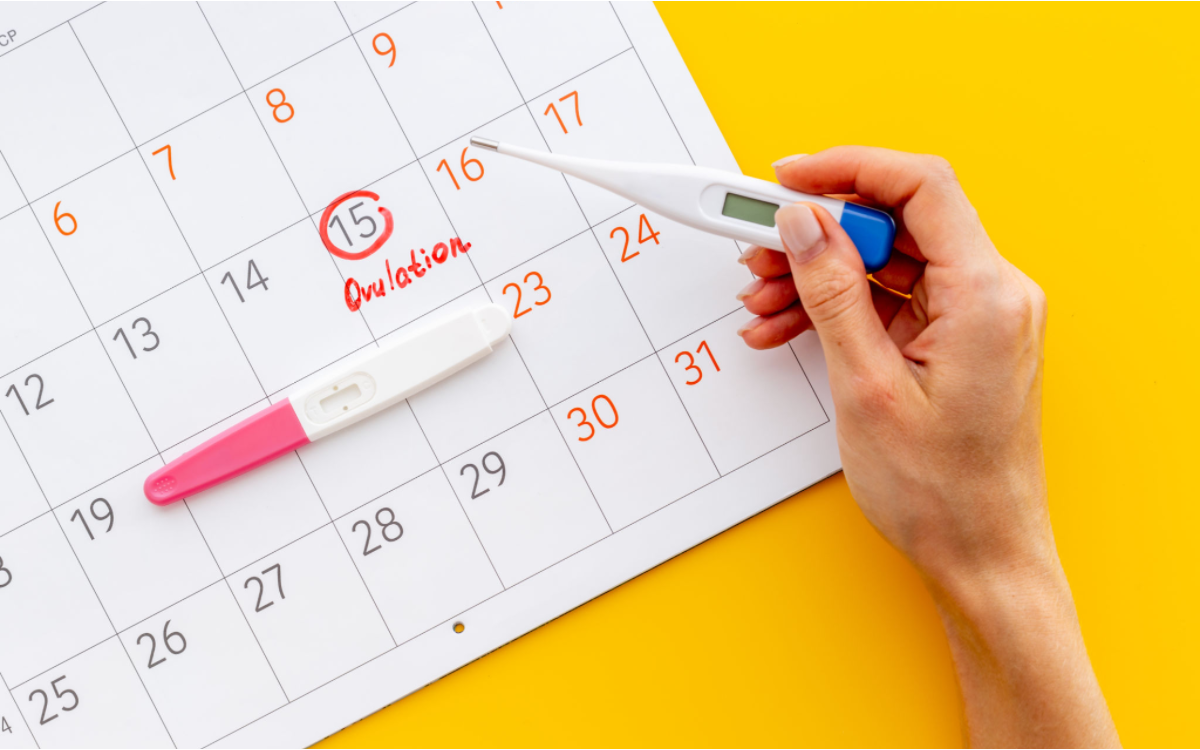Embarking on the journey to parenthood is a momentous decision that fills the hearts of couples with excitement and anticipation. As you and your partner dream of bringing a new life into the world, understanding your fertility becomes of utmost importance. Ovulation tracking is a powerful practice that can significantly enhance your chances of conceiving a baby by helping you identify your most fertile days. Motherhood Center, a leading expert in maternal and newborn care, is here to support you on this exciting journey with a comprehensive guide that offers valuable insights to enhance your family planning experience.
By monitoring your ovulation, you can accurately predict when you are most likely to conceive. Armed with this knowledge, you can plan intercourse strategically to optimize the chances of sperm meeting the egg and initiating the beautiful journey of creating a new life. In this article, we will guide you through the process of tracking ovulation, providing you with valuable insights and methods to empower you on your fertility journey.
Understanding Ovulation
Ovulation is a crucial phase in a woman’s menstrual cycle, where a mature egg is released from the ovary, ready for fertilization. It usually occurs around the 14th day of a 28-day cycle, but this can vary. Hormones orchestrate this process, with a surge in luteinizing hormone (LH) triggering the egg’s release.
Recognizing the timing of ovulation is essential for couples trying to conceive, as it marks the peak of fertility. The released egg remains viable for about 12 to 24 hours. Understanding ovulation also provides valuable insights into a woman’s reproductive health, as irregular patterns may signal hormonal imbalances or health issues.
By familiarizing yourself with the intricacies of ovulation and its significance in the conception process, you can empower yourself to make informed decisions regarding family planning. Whether you are actively trying to conceive or simply monitoring your reproductive health, understanding ovulation can be an invaluable tool in your journey toward a fulfilling and healthy pregnancy.
Knowing Your Menstrual Cycle
Understanding your menstrual cycle is essential for successful ovulation tracking and family planning. The menstrual cycle is the monthly hormonal process that prepares the female body for pregnancy. On average, it lasts around 28 days, although individual variations are normal. The cycle is divided into two main phases: the follicular phase and the luteal phase. The follicular phase begins on the first day of menstruation and lasts until ovulation. During this period, follicle-stimulating hormone (FSH) prompts the ovaries to develop follicles, each containing an immature egg. As the follicles mature, they produce estrogen, which stimulates the thickening of the uterine lining in preparation for pregnancy.
Around the middle of the cycle, luteinizing hormone (LH) surges, triggering the release of the matured egg from the dominant follicle—this is ovulation. The luteal phase follows, during which the ruptured follicle transforms into the corpus luteum, producing progesterone to support a potential pregnancy. If fertilization does not occur, hormone levels drop, leading to the shedding of the uterine lining, and menstruation begins again. By recognizing the distinct phases of your menstrual cycle, you can effectively determine the most fertile window for conception, allowing you to plan for pregnancy or use contraception more effectively.
Signs of Ovulation
Recognizing the signs of ovulation is crucial in identifying your most fertile days for conception. Ovulation, the release of a mature egg from the ovaries, typically occurs once during a woman’s menstrual cycle. Understanding the physical and hormonal changes accompanying ovulation empowers you to pinpoint this crucial phase accurately.
One primary indicator of ovulation is the presence of physical symptoms. Some women experience mild abdominal pain or a slight twinge in their lower abdomen during ovulation, known as “mittelschmerz” (German for “middle pain”). This sensation occurs as the egg is released from the ovary and may last for a few minutes to hours, helping you identify your ovulation window.
Ovulation predictor kits (OPKs) are effective tools for detecting the surge in luteinizing hormone (LH) before ovulation. LH surges approximately 24 to 36 hours before ovulation, and OPKs detect its presence in urine, indicating ovulation is likely to occur within the next 12 to 36 hours. These kits are particularly useful for those with irregular cycles or couples seeking precise fertile window identification.
Additionally, some women experience subtle changes in their basal body temperature (BBT) during ovulation. Tracking BBT involves taking your temperature each morning before getting out of bed and noting variations. After ovulation, a slight increase in BBT is common due to the hormone progesterone released during this phase, offering further confirmation of ovulation. Combining methods like observing physical symptoms, tracking cervical mucus, using OPKs, or BBT charting provides a comprehensive approach to accurately identifying ovulation and optimizing conception chances.
Ways to Track Ovulation
Tracking ovulation is a crucial step for women planning to conceive or avoid pregnancy. Understanding the timing of ovulation—the release of a mature egg from the ovaries—allows couples to identify the most fertile days in a woman’s menstrual cycle, maximizing their chances of successful conception. Fortunately, there are various effective methods available to track ovulation accurately. By combining multiple tracking techniques, individuals can gain comprehensive insights into their fertility patterns and make informed decisions about family planning.
Calendar Method
The calendar method, also known as the Standard Days Method, involves recording the start and end dates of menstrual cycles over several months. By meticulously tracking periods, women can gain valuable insights into the regularity and pattern of their menstrual cycles. Once sufficient data is collected, the average cycle duration can be identified, allowing an estimation of the approximate time of ovulation. This method is most effective for women with consistent menstrual cycles lasting between 26 to 32 days. During the estimated ovulation window of about 5 to 7 days, the likelihood of conceiving is higher, making it ideal for couples trying to become pregnant.
While the calendar method provides a useful estimate, combining it with other tracking techniques like monitoring cervical mucus or using ovulation predictor kits enhances accuracy. If individuals have irregular periods or are trying to conceive, consulting healthcare professionals or fertility specialists can offer personalized guidance on their journey to parenthood.
Basal Body Temperature (BBT) Charting
Basal Body Temperature (BBT) charting involves recording your body’s temperature upon waking each morning to track hormonal changes throughout your menstrual cycle. By using a specialized basal body thermometer, you can identify slight temperature fluctuations. Before ovulation, estrogen levels rise, causing a drop in basal body temperature, while after ovulation, progesterone leads to a temperature rise. This biphasic pattern serves as a reliable indicator of ovulation, helping you pinpoint your fertile window—typically spanning a few days before and after the temperature rise—when conception is most likely. Combining BBT charting with other tracking techniques enhances accuracy and provides comprehensive insights into menstrual cycle regularity and hormonal patterns.
Cervical Mucus Observation
Cervical mucus observation is a simple yet informative method of tracking ovulation. Throughout the menstrual cycle, hormonal changes impact the appearance and consistency of cervical mucus. Before ovulation, mucus gradually increases in volume and becomes clear, slippery, and stretchy, resembling raw egg whites. This fertile cervical mucus serves as a welcoming environment for sperm, facilitating their movement and increasing the likelihood of successful fertilization. By closely monitoring changes in cervical mucus, you can identify your most fertile days accurately. Combining it with other ovulation-tracking techniques enhances fertility awareness and helps you optimize the chances of conception.
Ovulation Predictor Kits (OPKs)
Ovulation predictor kits (OPKs) are reliable tools for detecting the surge in luteinizing hormone (LH) that precedes ovulation. These kits work similarly to pregnancy tests, detecting LH in urine. A positive result on an OPK indicates that ovulation is likely to occur within the next 12 to 36 hours, helping women identify their fertile window. OPKs are particularly helpful for those with irregular menstrual cycles or for couples who want to pinpoint their fertile window accurately. To use an OPK effectively, women should follow the instructions on the package and perform the test around the time when ovulation is expected based on menstrual cycle data.
Fertility Monitors
Fertility monitors are advanced devices that combine multiple tracking methods, such as BBT charting and LH testing, to provide a comprehensive analysis of fertility status. These monitors offer personalized insights and predictions, making them ideal for couples seeking more accurate ovulation tracking. Some fertility monitors also include additional features like smartphone connectivity and cycle tracking apps, further enhancing convenience and data management.
Ovulation Apps
Ovulation tracking apps have gained popularity, providing a user-friendly and accessible way to monitor fertility. These smartphone applications allow women to log menstrual cycles, symptoms, and lifestyle factors, providing predictions of fertile days based on the data input. Some apps even offer reminders for ovulation tests and other tracking activities, making it easier for individuals to stay on top of their fertility journey. The convenience and data organization provided by ovulation apps make them an excellent complement to other tracking methods.
Cervical Position Tracking
Some women observe changes in the position of their cervix throughout the menstrual cycle. As ovulation approaches, the cervix becomes softer, higher, and more open, indicating fertile days. While this method may require a bit more practice and familiarity with one’s own body, some women find it helpful in conjunction with other tracking techniques.
By employing a combination of these ovulation tracking methods, women can gain a comprehensive understanding of their menstrual cycles and fertility patterns. Each method offers unique insights, and using multiple techniques enhances accuracy. Family planning becomes more effective and informed, empowering women and couples to make decisions that align with their reproductive goals. If individuals encounter challenges in tracking ovulation or achieving pregnancy, consulting healthcare professionals or fertility specialists can offer personalized guidance and support on their journey to parenthood.
Best Time for Intercourse
Determining the best time for intercourse is crucial for couples trying to conceive. Timing intercourse around the woman’s ovulation window increases the likelihood of successful conception. The fertile window is the period when the woman’s body is most receptive to fertilization, and it includes the days leading up to and immediately after ovulation.
To identify the fertile window, tracking ovulation is essential. Various methods, such as monitoring changes in cervical mucus, using ovulation predictor kits (OPKs), or charting basal body temperature (BBT), can help pinpoint this critical phase of the menstrual cycle. By observing the signs of ovulation, couples can narrow down the window of opportunity and plan intercourse accordingly.
It’s important to note that sperm can survive in the female reproductive tract for several days, while the egg remains viable for about 12 to 24 hours after ovulation. Therefore, having intercourse in the days leading up to ovulation increases the chances of sperm being present when the egg is released. Combining this knowledge with the woman’s ovulation signs and tracking methods, couples can optimize their efforts for conception.
In summary, the best time for intercourse revolves around the woman’s ovulation window. By tracking ovulation and recognizing the signs of this crucial phase, couples can strategically plan intercourse during the fertile days, maximizing their chances of conceiving a healthy baby. While conception may not happen immediately, patience, persistence, and understanding of the fertile window can significantly improve the journey toward parenthood.
Factors Affecting Ovulation
Ovulation, the release of a mature egg from the ovaries, is a complex process influenced by various factors within a woman’s body. Understanding these factors can provide valuable insights into ovulation tracking and fertility. Here are some key factors affecting ovulation:
Age
A woman’s age plays a significant role in ovulation. As women approach their late 30s and early 40s, the number and quality of eggs decline, reducing the frequency of ovulation. This age-related decline in fertility is a natural part of the reproductive aging process.
Hormonal Balance
Hormonal balance is critical for regular ovulation. The menstrual cycle relies on a delicate interplay of hormones, such as estrogen, progesterone, follicle-stimulating hormone (FSH), and luteinizing hormone (LH). Any hormonal imbalances, such as polycystic ovary syndrome (PCOS) or thyroid disorders, can disrupt ovulation and menstrual regularity.
Stress
High levels of stress can interfere with the hormonal signals responsible for ovulation. Stress hormones, like cortisol, may disrupt the normal release of reproductive hormones, impacting the timing and occurrence of ovulation.
Weight and BMI
Both low and high body weight can affect ovulation. Women with a body mass index (BMI) below or above the healthy range may experience irregular menstrual cycles or anovulation (lack of ovulation).
Health Conditions
Certain health conditions, such as diabetes and autoimmune disorders, can influence ovulation. Additionally, chronic conditions or infections can temporarily disrupt hormonal balance, affecting the timing of ovulation.
Medications
Some medications, such as certain antidepressants and chemotherapy drugs, may impact ovulation. It is essential to consult healthcare professionals about potential effects on fertility when starting new medications.
Lifestyle Factors
Lifestyle choices, such as smoking, excessive alcohol consumption, and inadequate nutrition, can affect ovulation. Adopting a healthy lifestyle can positively influence reproductive health and increase the likelihood of regular ovulation.
It’s essential to remember that every woman’s body is unique, and factors affecting ovulation can vary from person to person. If individuals experience difficulties with ovulation or have concerns about fertility, consulting healthcare professionals or fertility specialists can provide personalized guidance and support to address any underlying issues and improve the chances of successful conception. By gaining a comprehensive understanding of the factors affecting ovulation, individuals can take proactive steps to optimize their reproductive health and achieve their family planning goals.
Consulting a Healthcare Professional
Consulting a healthcare professional is essential for couples planning to conceive or facing challenges in conceiving. These professionals, including gynecologists, obstetricians, and fertility specialists, provide personalized guidance and support for reproductive health. During preconception counseling, they assess overall health, identify potential factors affecting fertility, and offer recommendations for optimizing health and fertility.
For couples experiencing difficulties conceiving, a fertility assessment helps identify potential issues. Healthcare professionals conduct comprehensive evaluations of both partners’ reproductive health, including tracking ovulation, hormone level assessments, and semen analysis. Based on the results, they can provide appropriate treatments and address underlying medical conditions that may affect fertility.
Healthcare professionals also offer emotional support throughout the journey, helping couples cope with emotional aspects and providing reassurance during fertility treatments. Their expertise and personalized care empower couples to make informed decisions and embark on the path to parenthood with confidence and hope.
Conclusion
Congratulations on completing this comprehensive guide on how to track your ovulation for pregnancy! Equipped with valuable insights and knowledge about ovulation tracking, you are now prepared to confidently embark on the path to parenthood. The key to successful conception lies in identifying your fertile window and optimizing the timing of intercourse.
Motherhood Center is here to offer unwavering support and expert guidance throughout your journey. Our team of experienced professionals is passionate about providing top-notch care to expectant parents. From educational classes to pre-pregnancy and prenatal nutrition, our range of services is tailored to meet your specific needs.
Embrace the excitement of family planning with the resources and support Motherhood Center has to offer. Whether you are just starting the process or seeking assistance along the way, know that you don’t have to navigate it alone. Your dream of parenthood is within reach, and we are thrilled to be a part of your wonderful journey ahead. Let’s make your dream of starting a family a beautiful reality together!
FAQs
How do I track my ovulation effectively?
Ovulation tracking can be done through various methods, including monitoring changes in cervical mucus, using ovulation predictor kits (OPKs), or charting basal body temperature (BBT). Each method offers unique insights into your fertile window, empowering you to identify the optimal time for conception.
Is ovulation tracking necessary if I have regular menstrual cycles?
Even with regular menstrual cycles, ovulation tracking can still be beneficial. While regular cycles indicate a higher likelihood of ovulation, tracking helps you pinpoint the exact timing, increasing the chances of conception and maximizing your family planning efforts.
Can stress impact ovulation?
Yes, high levels of stress can disrupt hormonal balance and affect ovulation. Finding effective stress management techniques, such as mindfulness practices or exercise, can positively influence reproductive health and support regular ovulation.
Are there natural methods to enhance fertility during ovulation?
Yes, lifestyle changes can positively impact fertility during ovulation. Maintaining a healthy weight, adopting a balanced diet rich in nutrients, and avoiding smoking and excessive alcohol consumption can all contribute to improved reproductive health.
When should I seek medical assistance if I’m struggling to conceive?
If you have been actively trying to conceive for over a year without success (or six months if you are over 35 years old), consider seeking a fertility assessment. Consulting a healthcare professional can help identify any underlying issues and provide guidance on potential treatments or assisted reproductive techniques.






